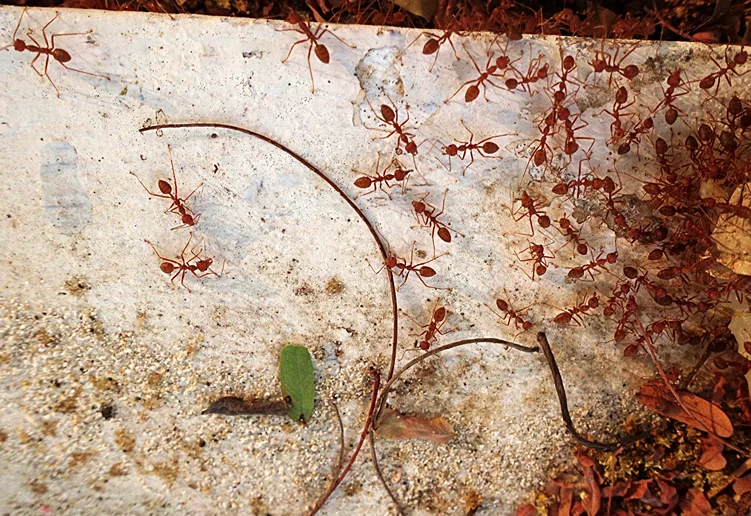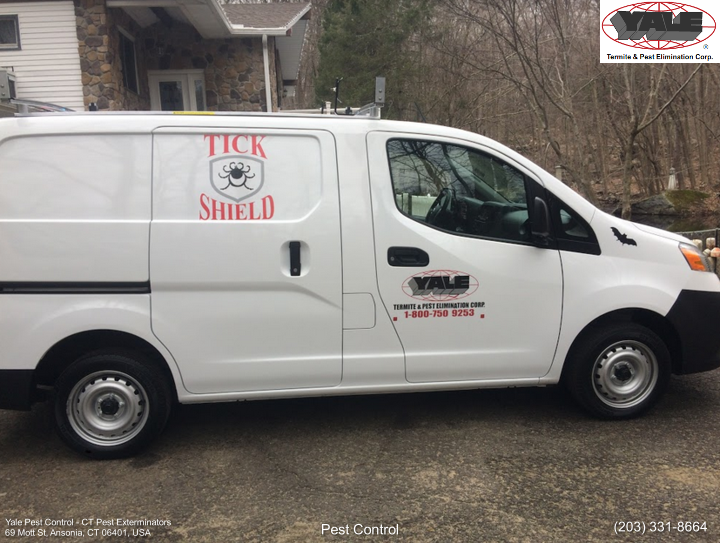
Ants are typically found in holes or wall voids, pavement cracks, and structures. They love wet and warm environments, such as cracks and fissures, beneath kitchen cabinets, pipes, within wooden beams, and any other tight space. One such dwelling place that they can choose to reside in is stone walls within or outside your property, typically habituated by fire ants.
How do you remove fire ants that have found their way inside your garden stone wall? Some of the best methods include sprays, liquid insecticides, insecticide dust, and ant baits. Ant colonies that have established themselves near your home can do significant damage to your walls and wooden buildings, as well as pose serious health dangers. As a result, the problem of ant colonies in the walls should be handled as soon as possible to avoid future serious issues.
One of the most well-known pests is ants. Some of the most common species of ants are the pavement ant, which is usually dark brown and feeds on dead insects, pet food, and even rotten coconut. But another ant type that is brown in color and much more ferocious is fire ants. But they aren't the supermen of ants, and boiling water, pesticides, and baits can help eradicate them like any other species of ant.
Plant sugars are the fire ants' primary food supply, making them a severe concern for farmers, but they also eat insects, rodents, birds, and reptiles. They use their strong four-toothed mandible to lock onto prey, then release an alkaloid-based venom that leaves a crimson and white pustule in their wake.
Proteins and peptides in the venom can cause an allergic response in some people. Around 5% of fire ant assaults are fatal to humans. Their ant colonies may go undetected, but bigger ant infestations can cause significant harm. You may save a lot of time and money if you examine and treat your property on time because larger ant infestations necessitate stringent controls and a comprehensive pest management strategy.
Liquid pesticide sprays are the most frequent way for removing ants from walls. This is one of the most effective and efficient ways to get rid of ant infestations. There are a variety of commercially available ant killer sprays that you may select the most appropriate one based on the ant species.
Contact ant killer and non-repellent insecticide sprays are two types of ant killer sprays that are commonly available (or residual ant killer). When ants come into touch with contact pesticide sprays, they are quickly killed. This strategy may not be effective since it only kills the ants already present at the place while causing the remaining ants to flee.
Non-repellent ant killers kill the ants without being seen. It doesn't kill the ants right away, allowing them to return to their nests to spread the pesticide. To prevent ant colonies from re-establishing themselves, spray all access points, trails, and nesting places and follow the preventive instructions.
Drenching the mound with a liquid pesticide is a simple and efficient technique to get rid of a fire ant infestation. Because the poison penetrates deeper into the ant mound, this approach is more effective than boiling water.
Users should create at least 2 to 3 gallons of the solution according to the manufacturer's recommendations and use it to saturate the anthill when using liquid treatments. This substance kills ants on touch and then leaves an active residue that kills other ants as they enter or escape the nest.
Keep in mind, however, that this procedure is equally as dangerous as boiling water since the selected ant exterminator must pour the solution near to the nest.
When compared to other pest management approaches, ant baits or traps yield the best results. Baits take a long time to work, but they can kill the entire colony, including the queen. Liquid baits, gel baits, and granular ant baits are some of the commercially available bait options. You can buy them based on the feeding habits of the ant species that have contaminated your walls, bait granules being the most effective for fire ants.
Sugar-based food is preferred by certain ants, whereas a protein-based diet is preferred by others (greasy). Liquid baits are sugar-based, less harmful, and packaged. Gel baits (usually sugar-based) come in tubes or syringes and can be sprayed on the ground near nesting areas. The majority of granular ant baits are solid protein-based.
Place these baits along ant routes, wall cavities, and access points. The ants will return to their colony with the bait and die as a result of the entire procedure. You may also verify the bait's efficiency for the specific ant species using a sample bait before using it. If you're not sure what kind of ant you're dealing with, use this method.
Baiting around a mound or in locations where nests may be hidden in a more secured area is the best way to lure them out. The ants grab the bait and transport it deep within their nest, killing the queen in the process. The idea is for the worker ants to gather the bait and transport it back to the nest, where it will kill any ants who consume it, especially the colony queen.
Ant sprays are less effective and less adaptable than insecticide powders or dust, in our opinion. Spray can leave a mark on the wall in some circumstances, and applying it inside the crevices is difficult. Insecticide dust, on the other hand, may penetrate deep into the gaps and kill the ants when used with a duster.
An old-school method is to pour boiling water over fire ant nests. Even though it's free, natural, and quick, it's not the most efficient way to get rid of anthills. The odds of the water reaching the queen, who is deep within the nest, are small. It's best to saturate the mound with liquid pesticides.
The boiling-water procedure works roughly 60% of the time. Here's what you should do: Pour 2 to 3 liters of hot water straight on the mound and be careful not to splatter the skin. The best course of action is to wait until the fire ants are in their nest (typically late at night), rapidly sprinkle the water, and then leave the area. The fire ants that do not die may relocate to a new location.
This is the most effective approach to get rid of fire ants that have taken over a large outdoor area. As if feeding chickens, the ant-infested homeowner may toss out handfuls of granules, and the ants will bring them home. Because the homeowner is not in direct contact with the nest, this procedure is safer than throwing pesticide or boiling water on it.
Some granules, however, may be light sensitive and lose their harmful properties before the ants consume them. When treating big yards, a broadcast spreader is more effective. A broadcast insecticide like Ortho's Fire Ant Killer may treat an area up to 5,000 ft2and last up to 6 months.
Broadcast insecticides are also effective in deterring fire ants looking for a new nesting site, so they may be used as both preventatives and kills.
There are a few indicators that your ants are fire ants. The red imported fire ants are petite and have a reddish/brown appearance. They like to remain outside and away from others in the neighborhood. They may, however, enter inside via the slightest of gaps in their hunt for food.
Don't instantly think red ants in your house are fire ants. Fire ants can be red or black, especially the black male reproductive. In the yard, red imported fire ants make mounds. The mounds resemble loose dirt hills.
There won't be a central hole towards the top, unlike some other ants. But be careful: any threat to the nest may force hundreds of fire ants to pour out of the mound and attack.
Western harvester ants and pharaoh ants are two ant species that are sometimes mistaken for fire ants. Fire ants are distinguished by their 10-segmented antenna, spineless thorax, and unique mandibles, in addition to their color. A non-professional, on the other hand, will have a tough time identifying fire ants. If you need help, call your local Western Exterminator office.
In the United States, there are 2 primary fire ant species to be aware of: red imported fire ants (Solenopsis invicta) and southern fire ants (Solenopsis xyloni).
Red imported fire ants (also known as RIFA) have been a significant source of concern for homeowners since the extremely aggressive, non-native species are known to develop massive colonies of up to 100,000 individuals deep below.
Southern fire ants may be found from California to the Atlantic coast. When mounds are disrupted, they construct loose mounds near trees and emerge in great numbers. Southern fire ants feed on other pest species, but their ability to sting and destroy property makes them a problem.

The name alone can strike fear in even the biggest of men. Fire ants are tiny pests that have painful stings and bites. We at Yale Pest Control ensure that your homes and commercial buildings are safe from ants on walls. Our effective ant control methods ensure that these persistent pests by using insecticide baits and fast-acting insecticides.
Get your peace of mind back and call us now at 800-750-9253.